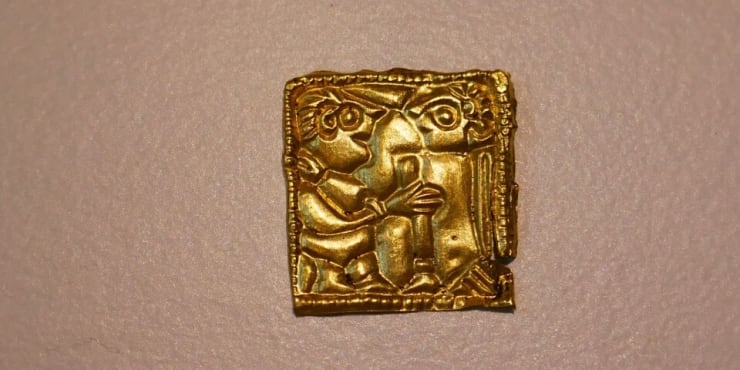
28.12.2013 Gold figurines from melted coins
Categories: Calendar , Nálezy nejenom s detektorem ve Skandinávii
The rare artefacts have been released several times by the Swedish archaeological site Västra Vång. The most remarkable are the small gold figurines, of which 29 have been found. They are made of melted coins.
The rare archaeological site, located in what is now the Swedish province of Blekinge, was searched by archaeologists using GPR. In 2013, they recorded the third most important discovery in Swedish history at Västra Vång. Most notable are the so-called guldgubbar. That's what they call gold leaf in Sweden, which depicts people. They're actually figurines. Archaeologists have discovered twenty-nine of them.
These figurines are quite small, only about two centimetres high. Archaeologists said at the time that they were made from gold coins that were originally used to pay Roman soldiers.
We wrote here: https://www.lovecpokladu.cz/home/zanikla-vesnice-a-figurky-vyrobene-z-roztavenych-minci-6115
Some of the gold leaf discovered also depicts a pair of men looking at each other. In addition, archaeologists have also found pottery, fragments of glass vessels and iron vessels. But they also found five bronze heads that were probably placed on a bronze vessel.
The objects were probably hidden deliberately. They date from a very turbulent time when the Western Roman Empire was falling apart. Tribes were fighting for survival and people were wandering all over Europe trying to save themselves.
Archaeologists have already made some remarkable finds in the area where the now extinct village of Västra Vång was located. There are many ancient monuments dating back to prehistoric times. There are also tombs and stone monuments from the Iron Age in the immediate vicinity of the village.
In 1865, a rare silver treasure from the Viking era was found in Västra Vång. It contained over four thousand silver coins and silver jewellery. In 2004, new explorations were carried out in connection with waterworks. Archaeologists came across the remains of a Late Iron Age settlement and an image of probable Celtic origin.
However, it was not until the aforementioned discovery in 2013 that it became clear that the local area can be referred to as a central area for the Iron Age. Archaeologists eventually found a total of 67 male figurines. They also discovered three more paintings similar to the one from 2004, as well as a Roman bronze bust and possibly a copy of it. The archaeologists had made all these discoveries by last year.


Sources: www.wikipedia.org, www.sydostran.se, www.thelocal.se, www.blekingemuseum.se
The article is included in categories:



